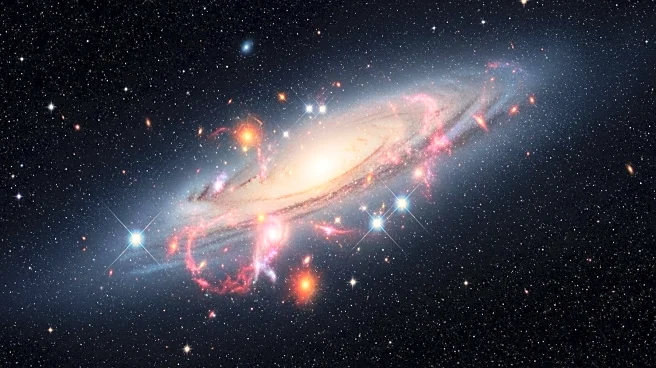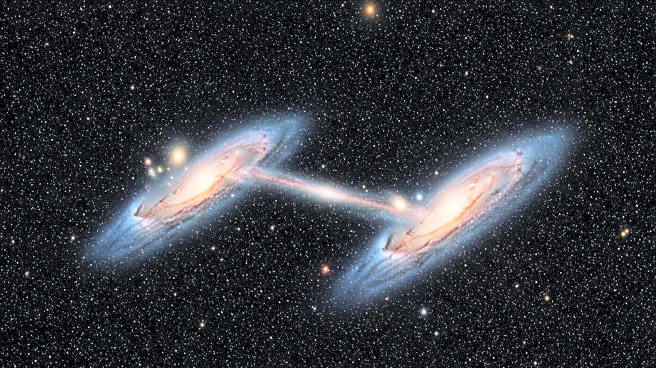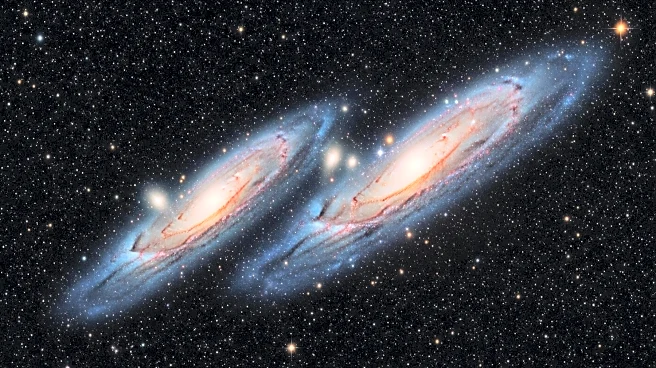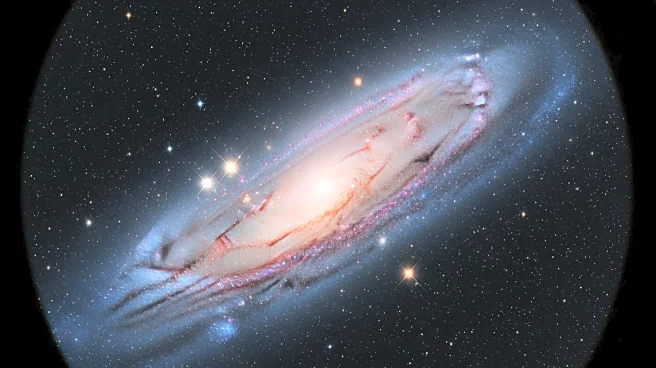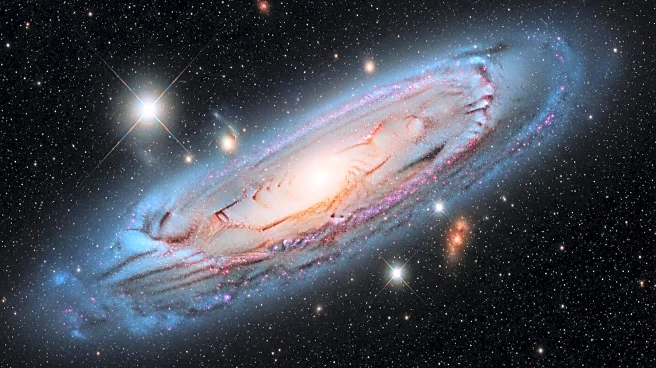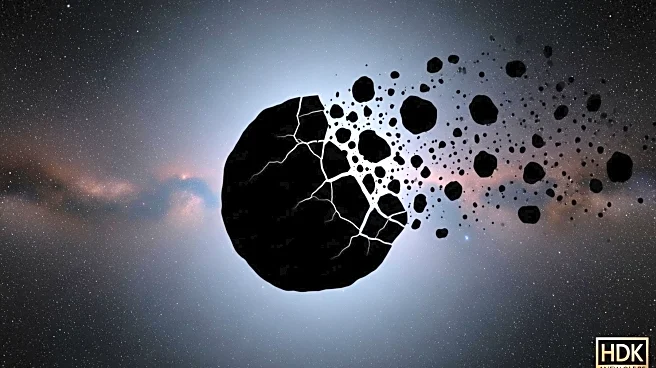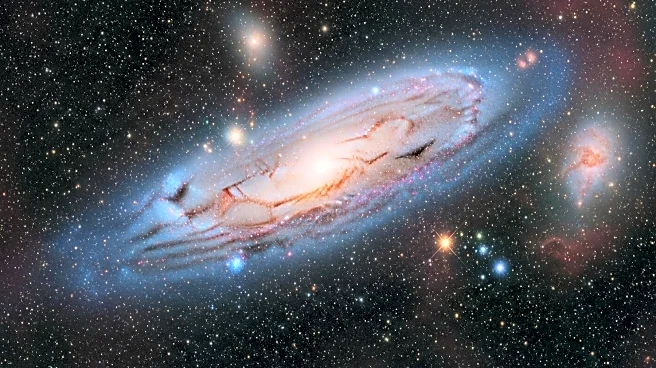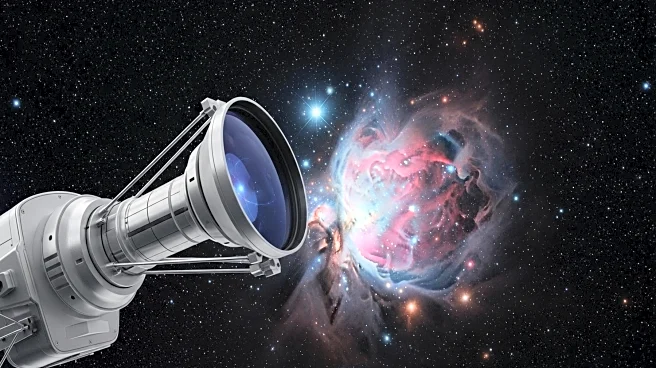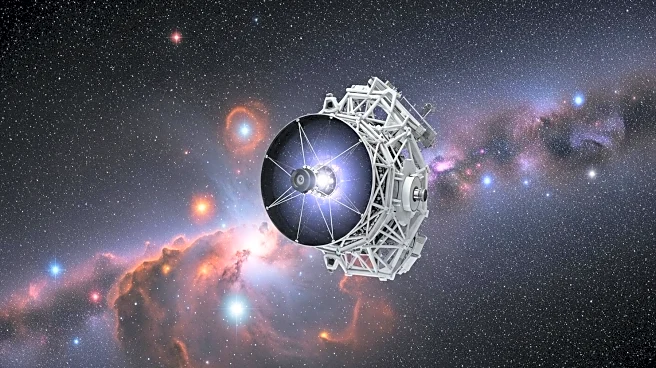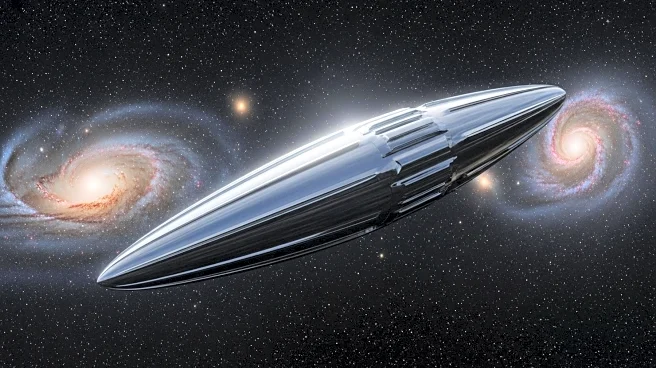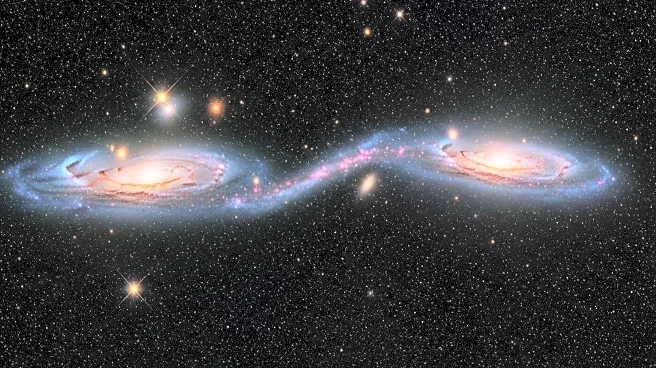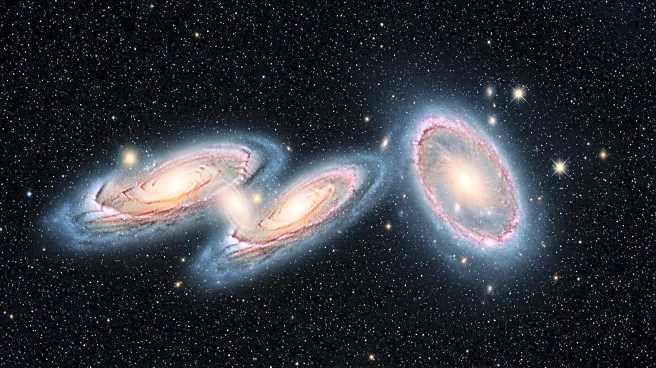What is the story about?
What's Happening?
The Hubble Space Telescope has captured detailed images of the spiral galaxy NGC 7456, located over 51 million light-years away in the constellation Grus. The galaxy is characterized by its patchy spiral arms, clumps of dark dust, and regions of glowing pink gas where new stars are forming. The European Space Agency's XMM-Newton satellite has also observed ultraluminous X-ray sources within the galaxy, which emit powerful X-rays. These observations contribute to the understanding of stellar activity and the evolution of galaxies over time.
Why It's Important?
The study of NGC 7456 provides valuable insights into the processes of star formation and the dynamics of active galaxies. The presence of ultraluminous X-ray sources suggests the existence of compact objects with extreme energy outputs, which could offer clues about the nature of black holes and other cosmic phenomena. Understanding these processes is crucial for developing comprehensive models of galaxy formation and evolution. The findings also highlight the capabilities of space telescopes in advancing astronomical research.
What's Next?
Astronomers will continue to study NGC 7456 and similar galaxies to explore the mechanisms driving star formation and X-ray emissions. Further observations using different wavelengths of light could reveal additional details about the galaxy's structure and activity. The research may also inform future studies of other active galaxies and contribute to the broader understanding of the universe's evolution.
Beyond the Headlines
The discovery underscores the importance of multi-wavelength observations in astronomy, as different types of light can reveal distinct aspects of cosmic objects. It also highlights the role of international collaboration in advancing space science and the potential for future discoveries using advanced telescopes.
AI Generated Content
Do you find this article useful?
